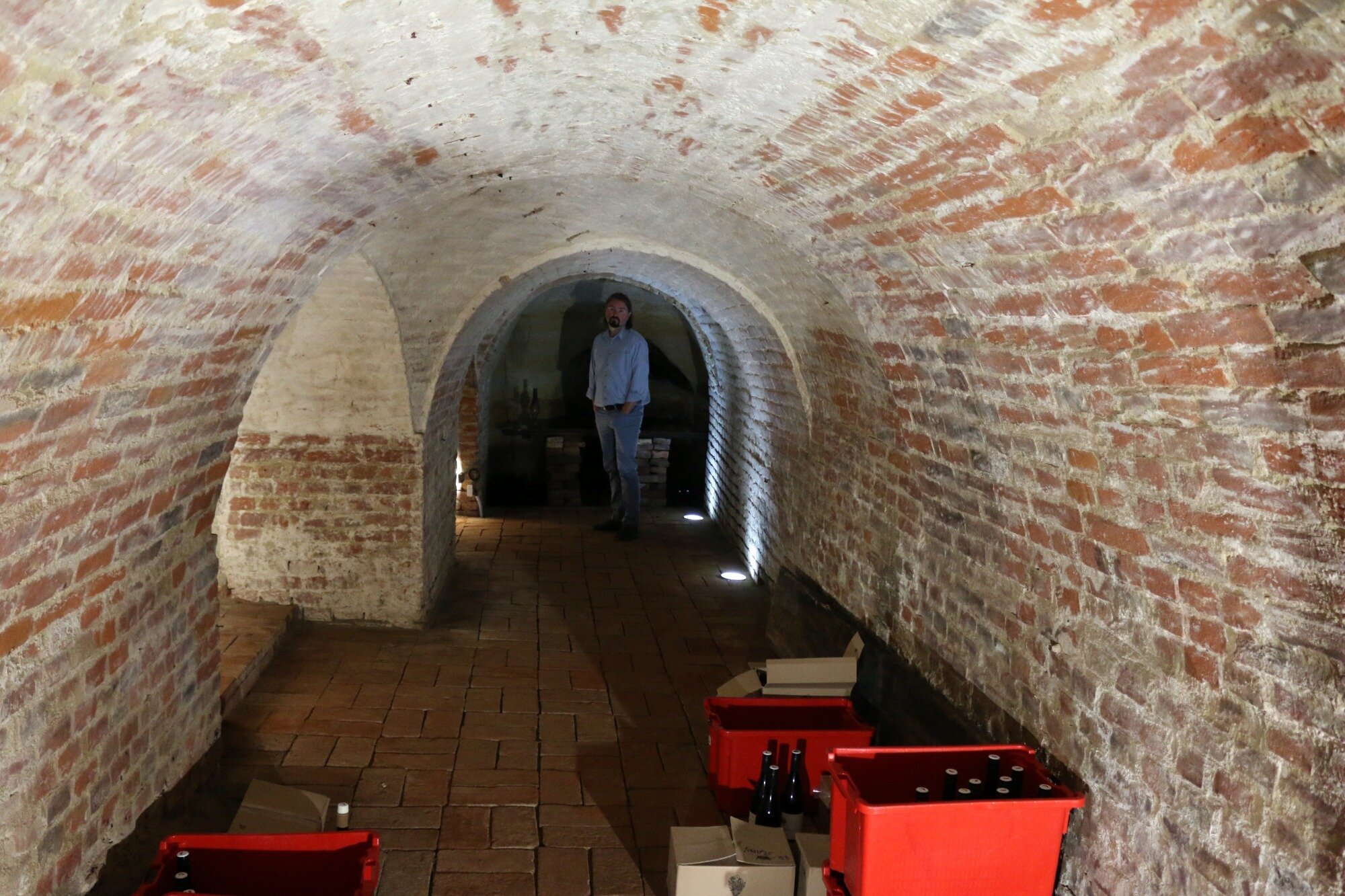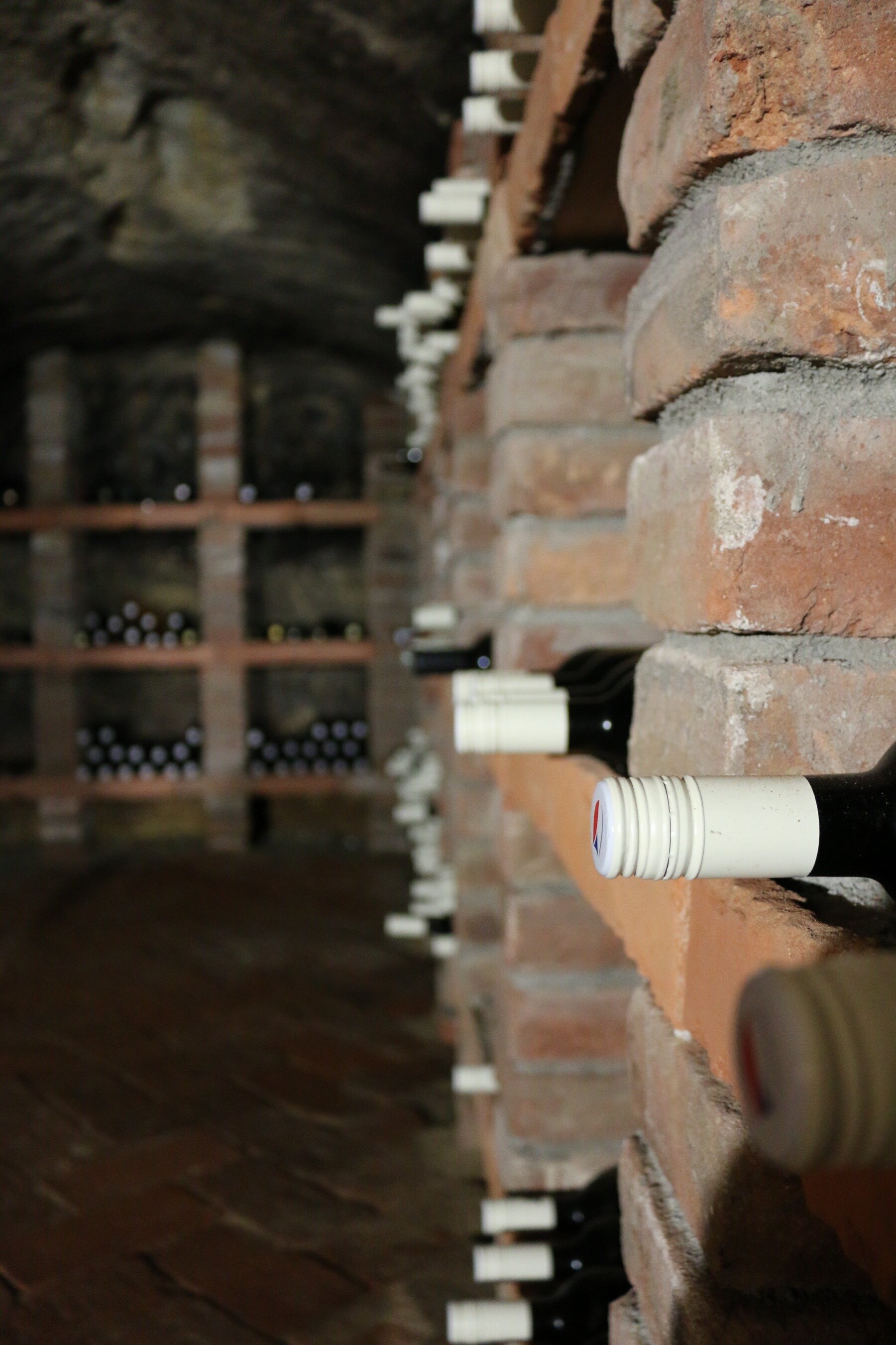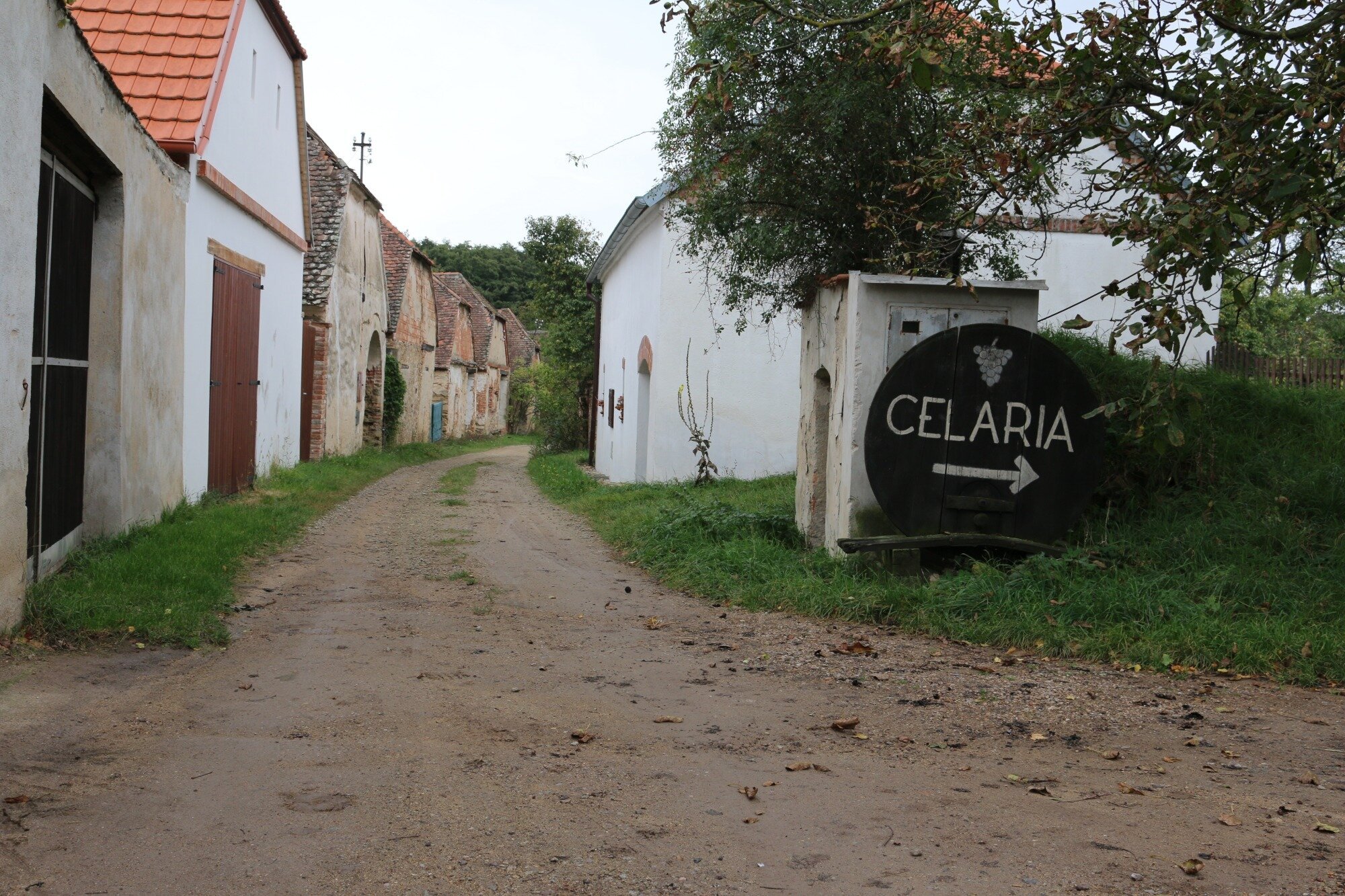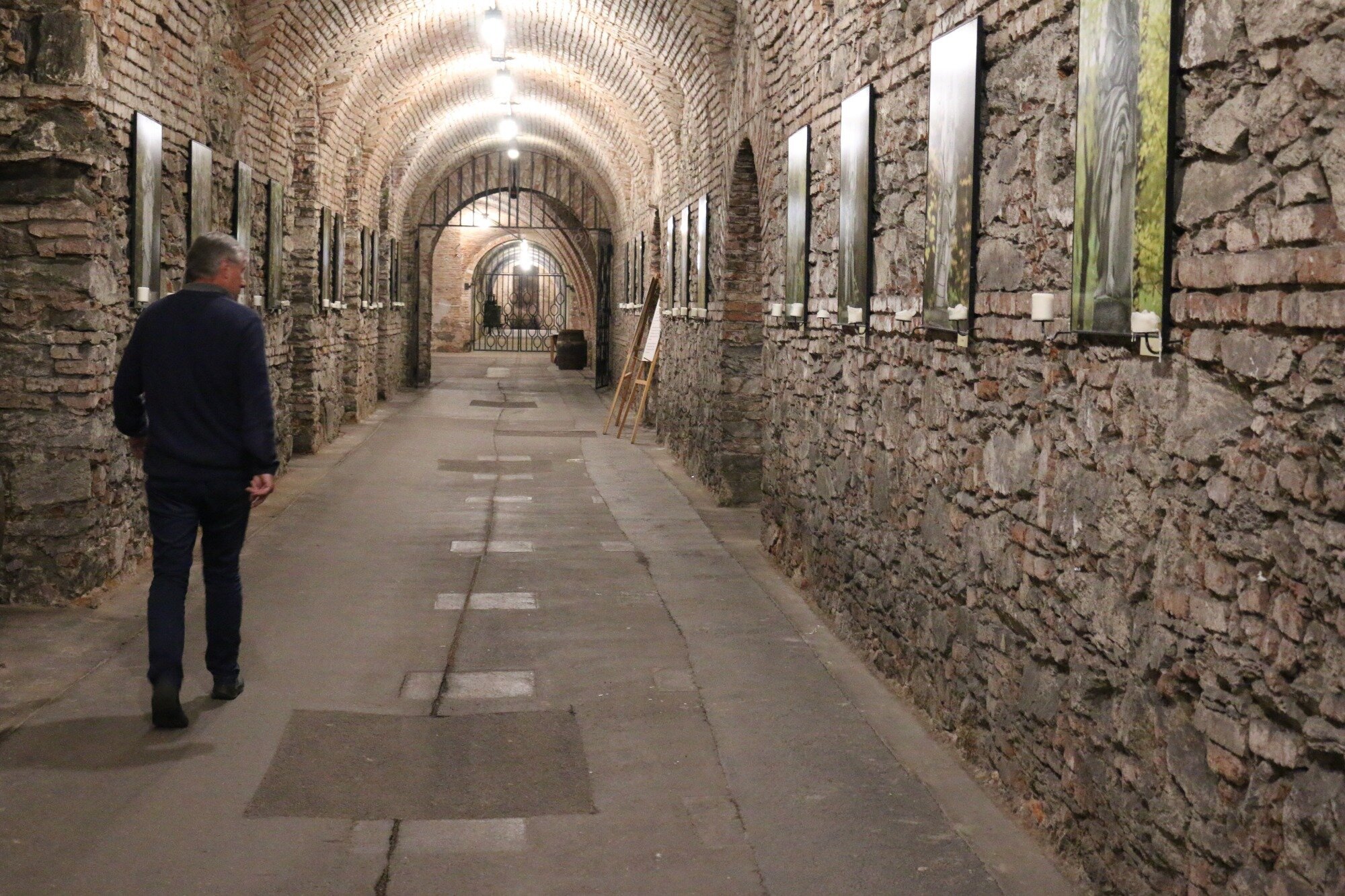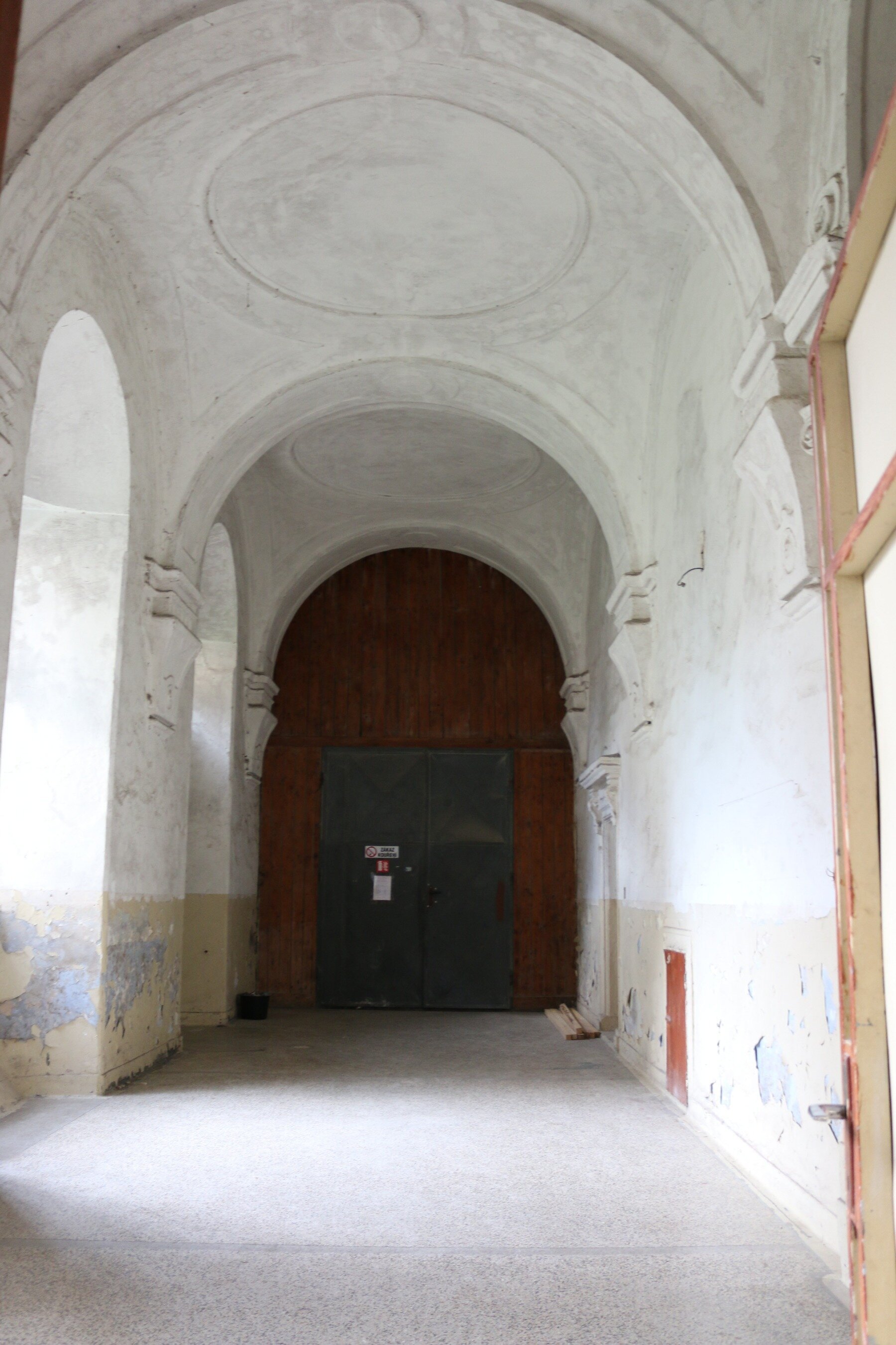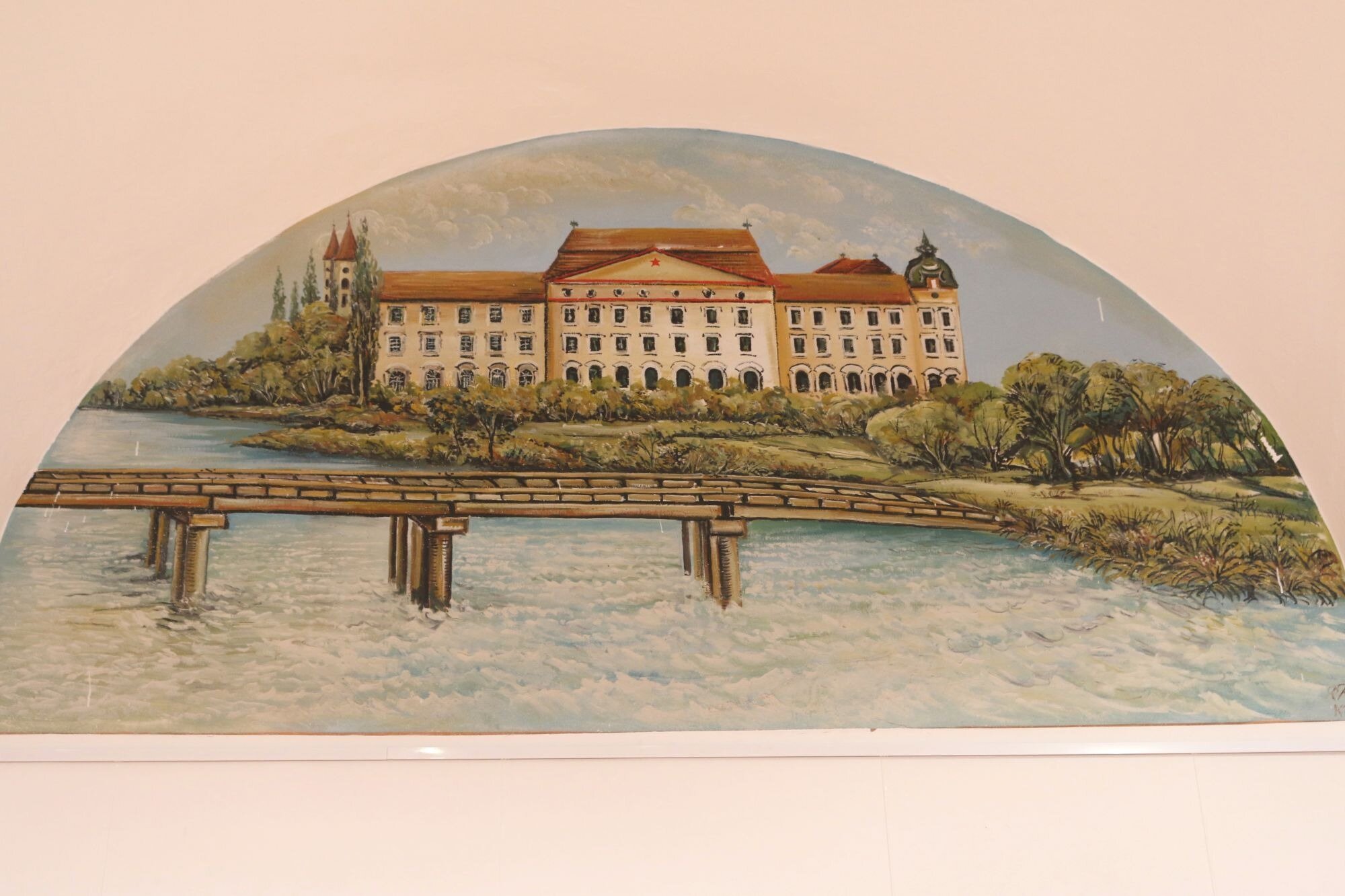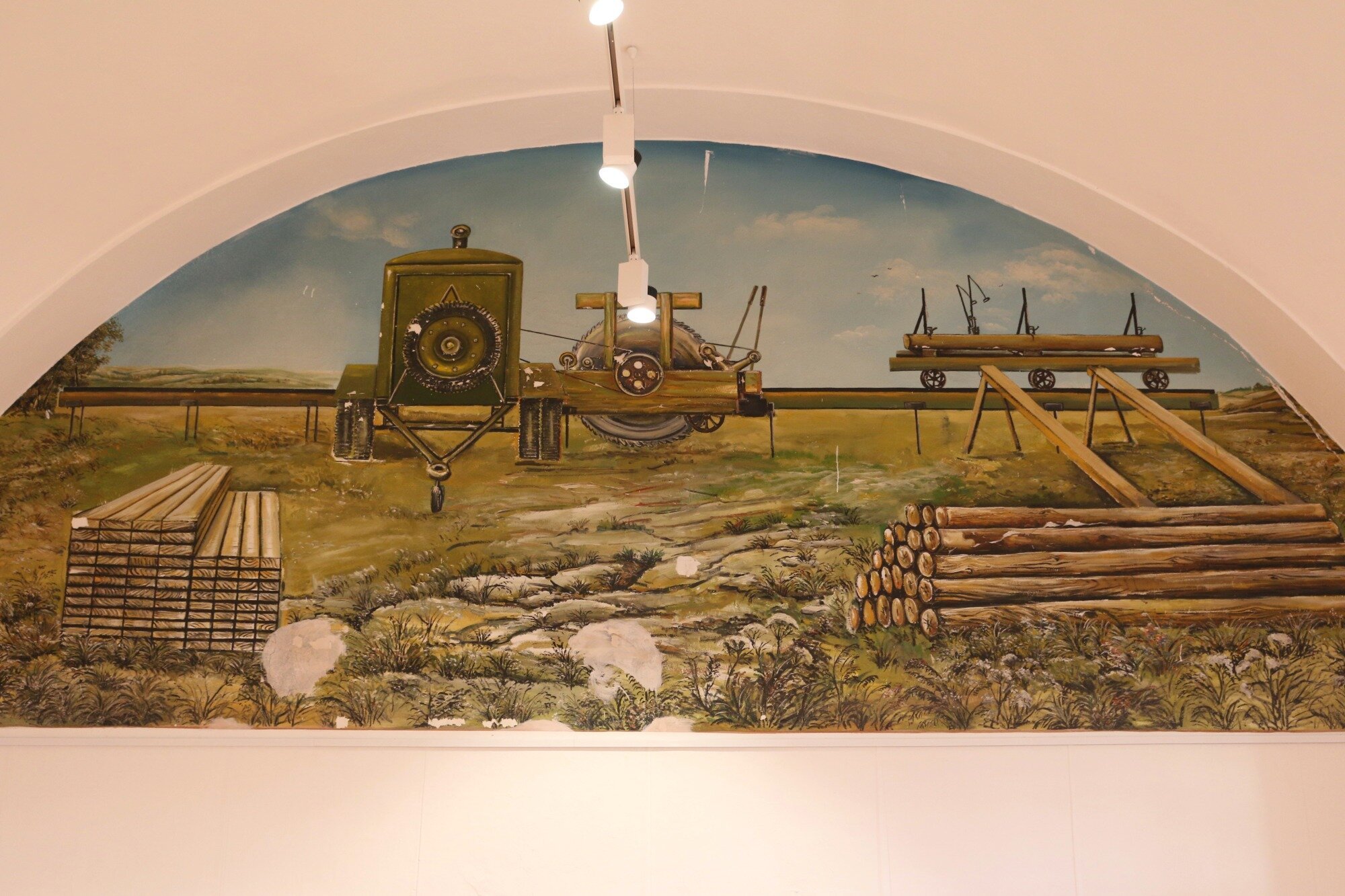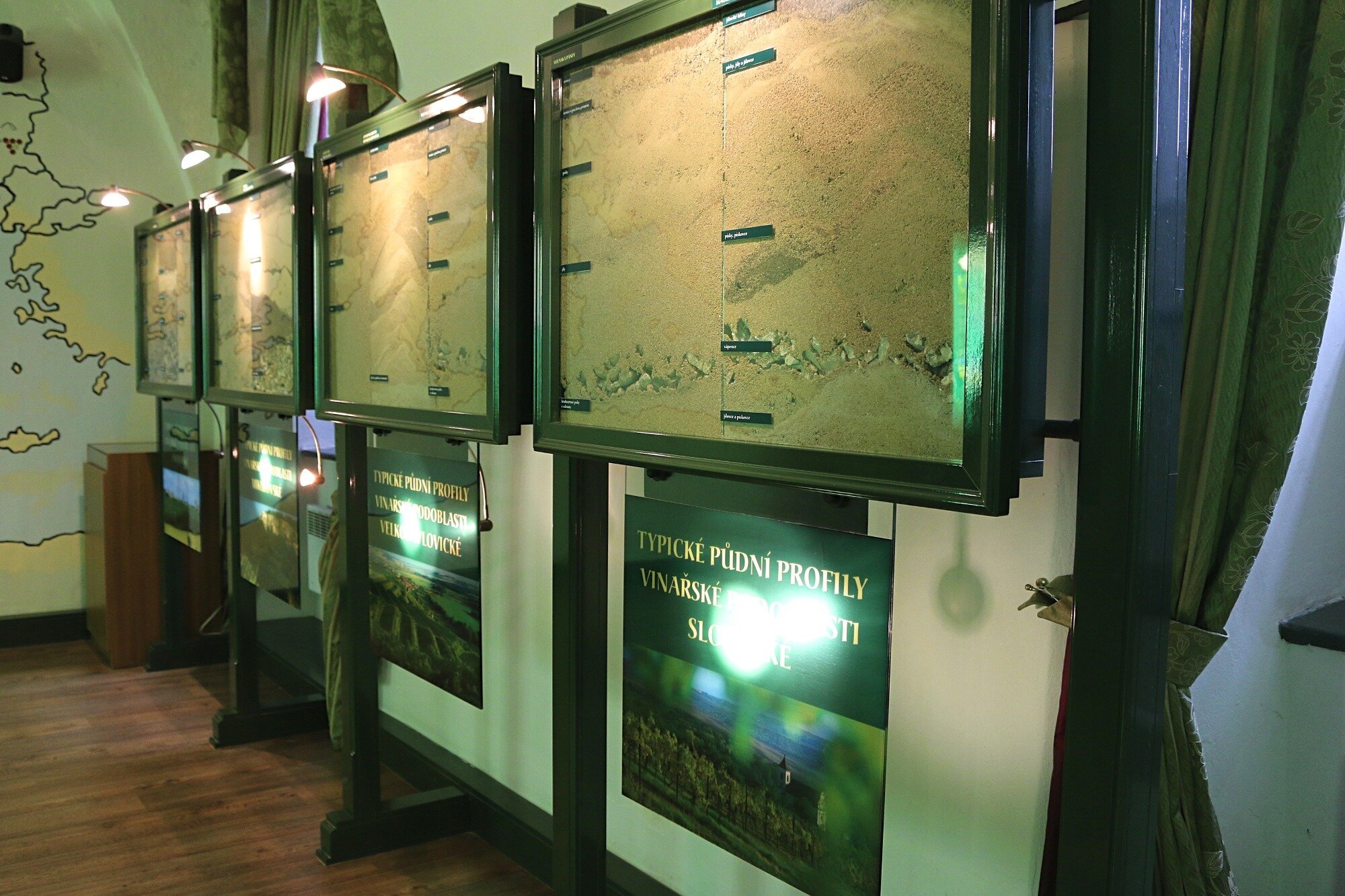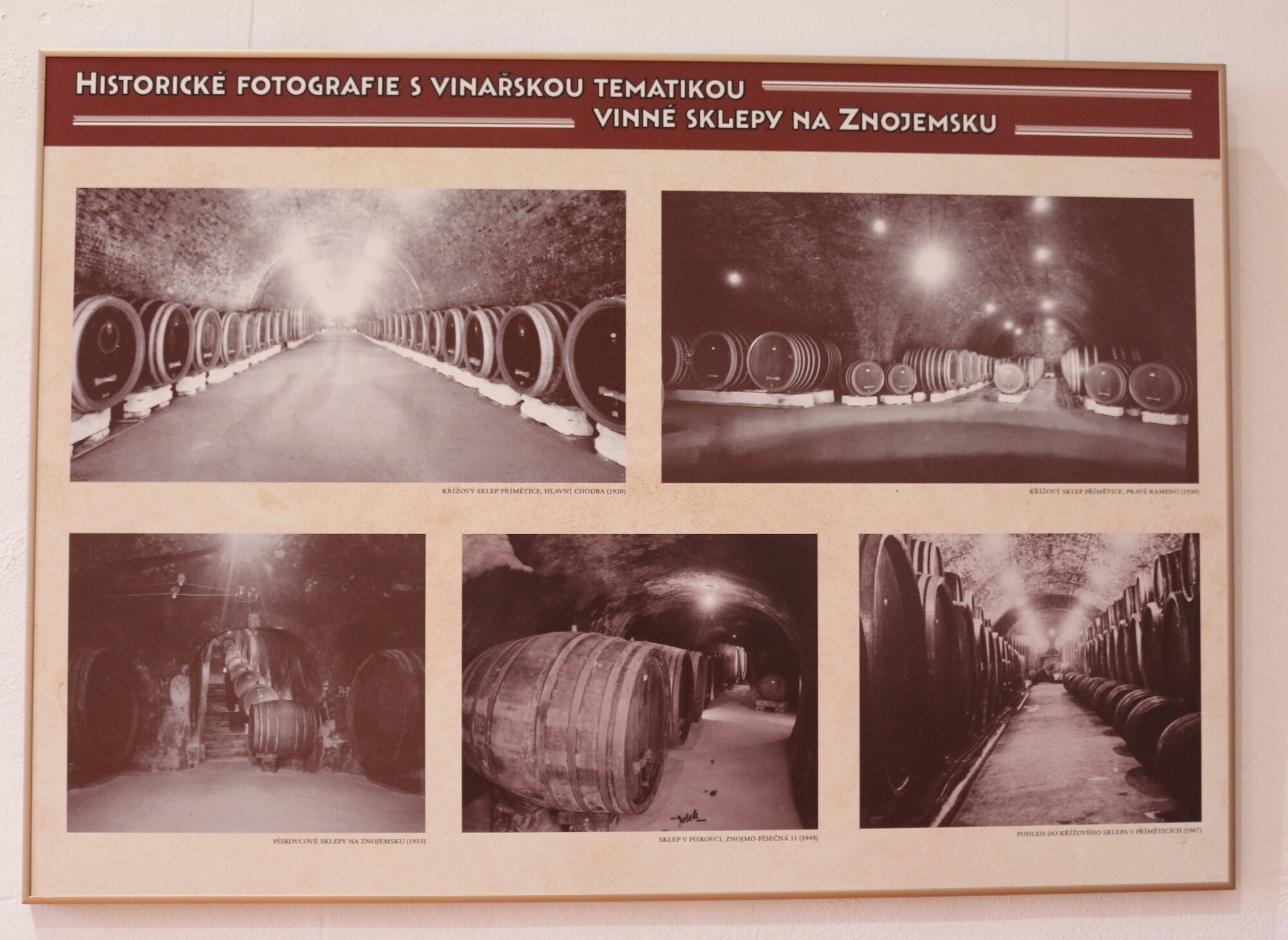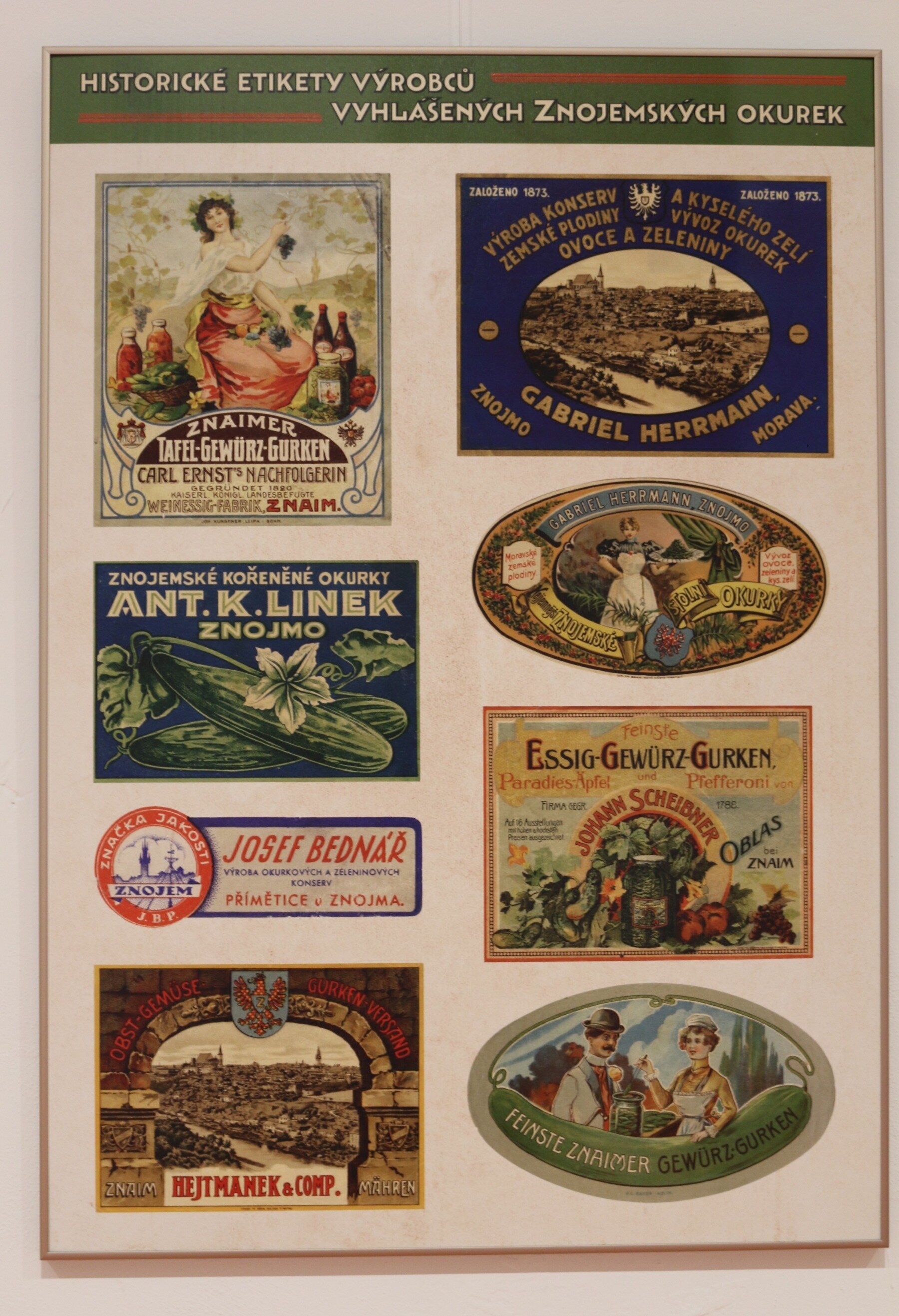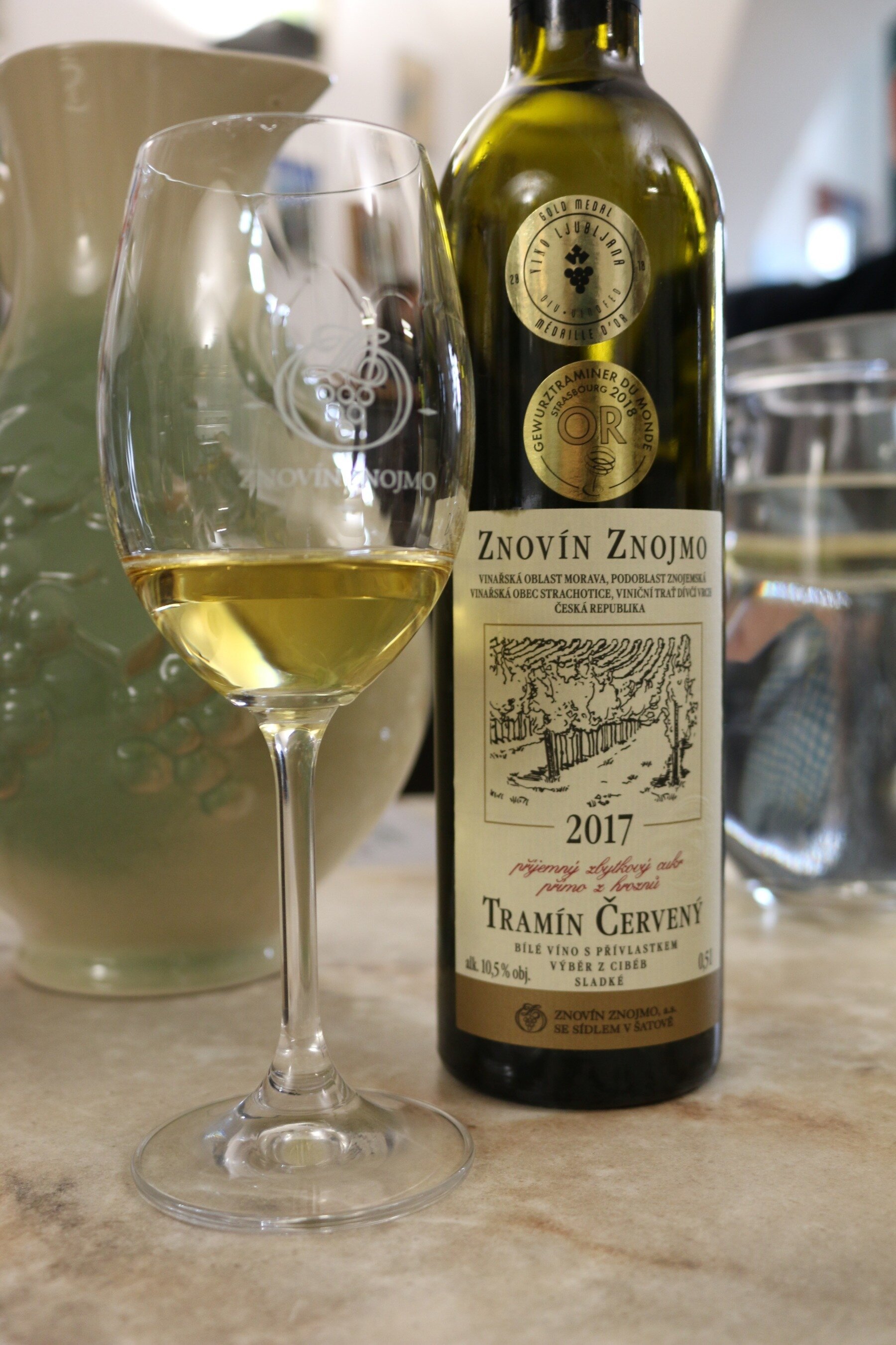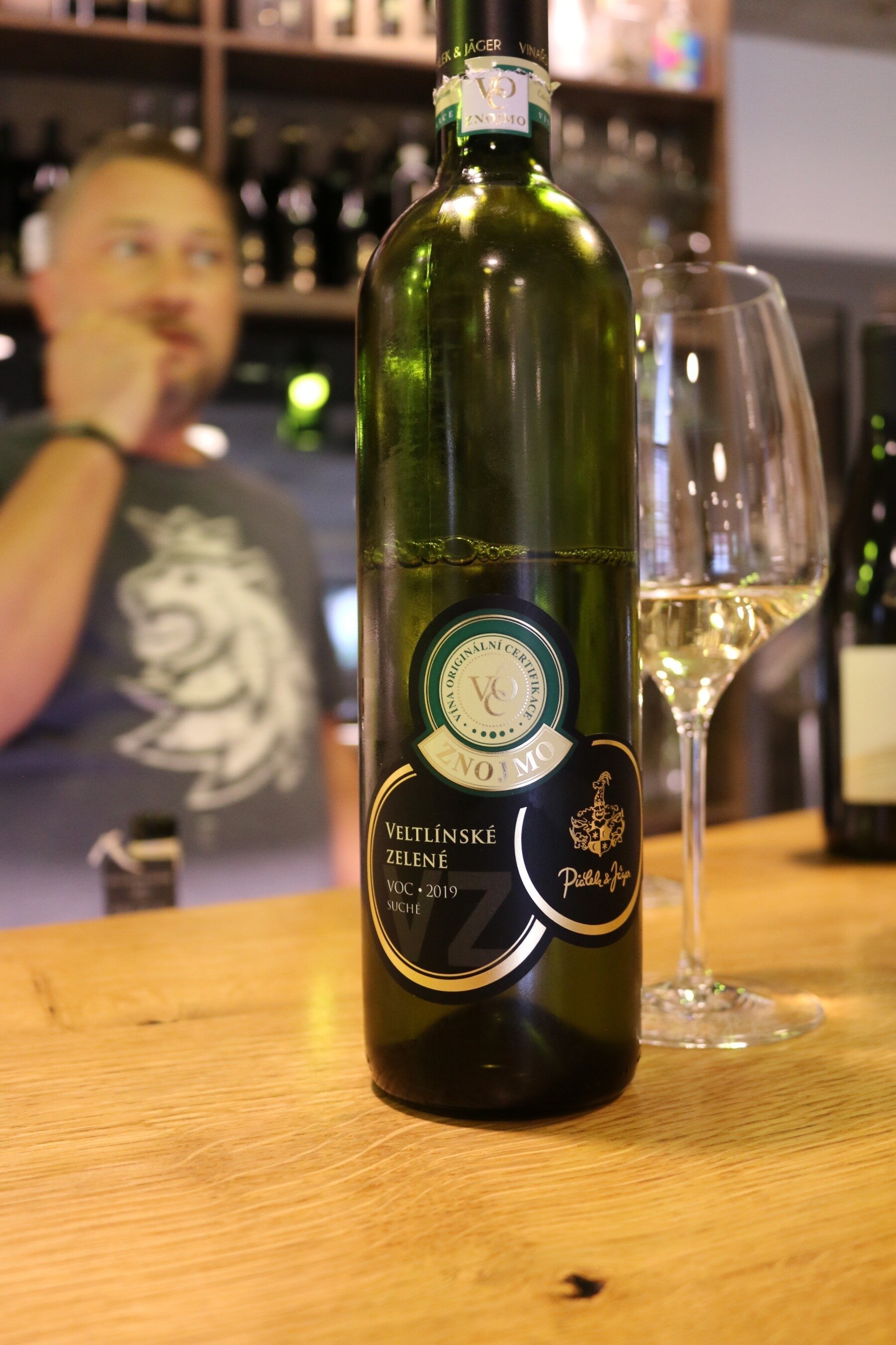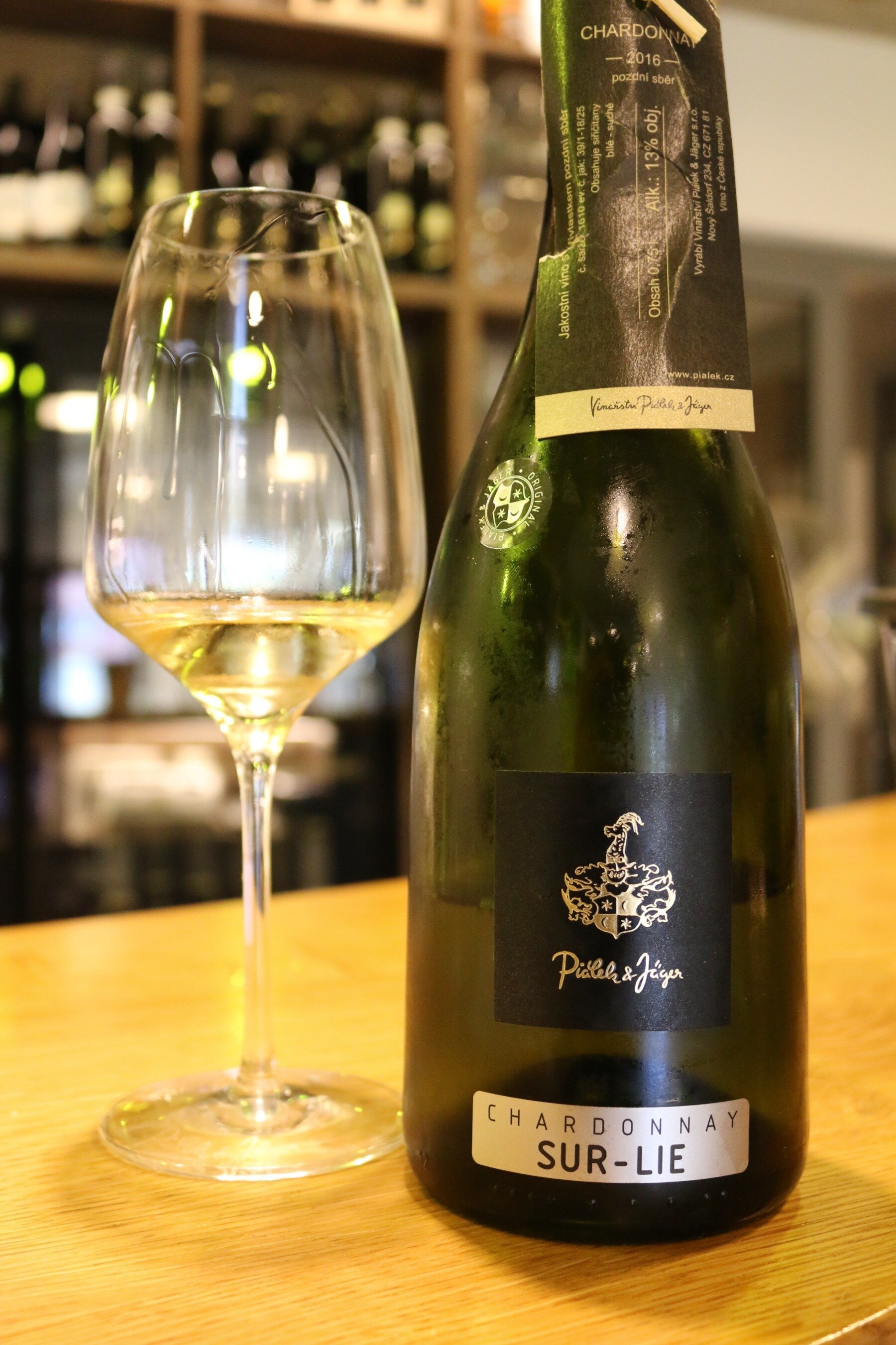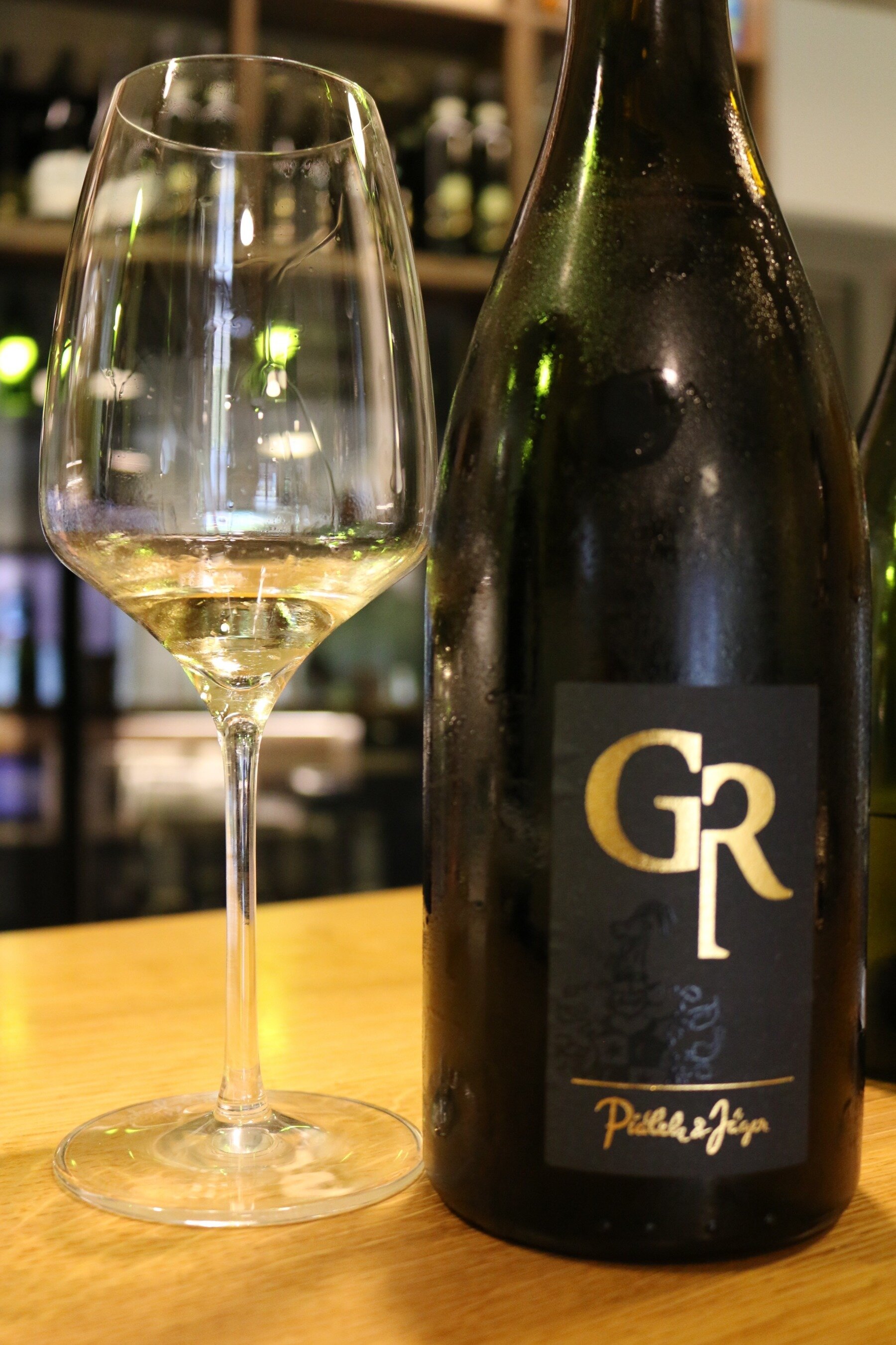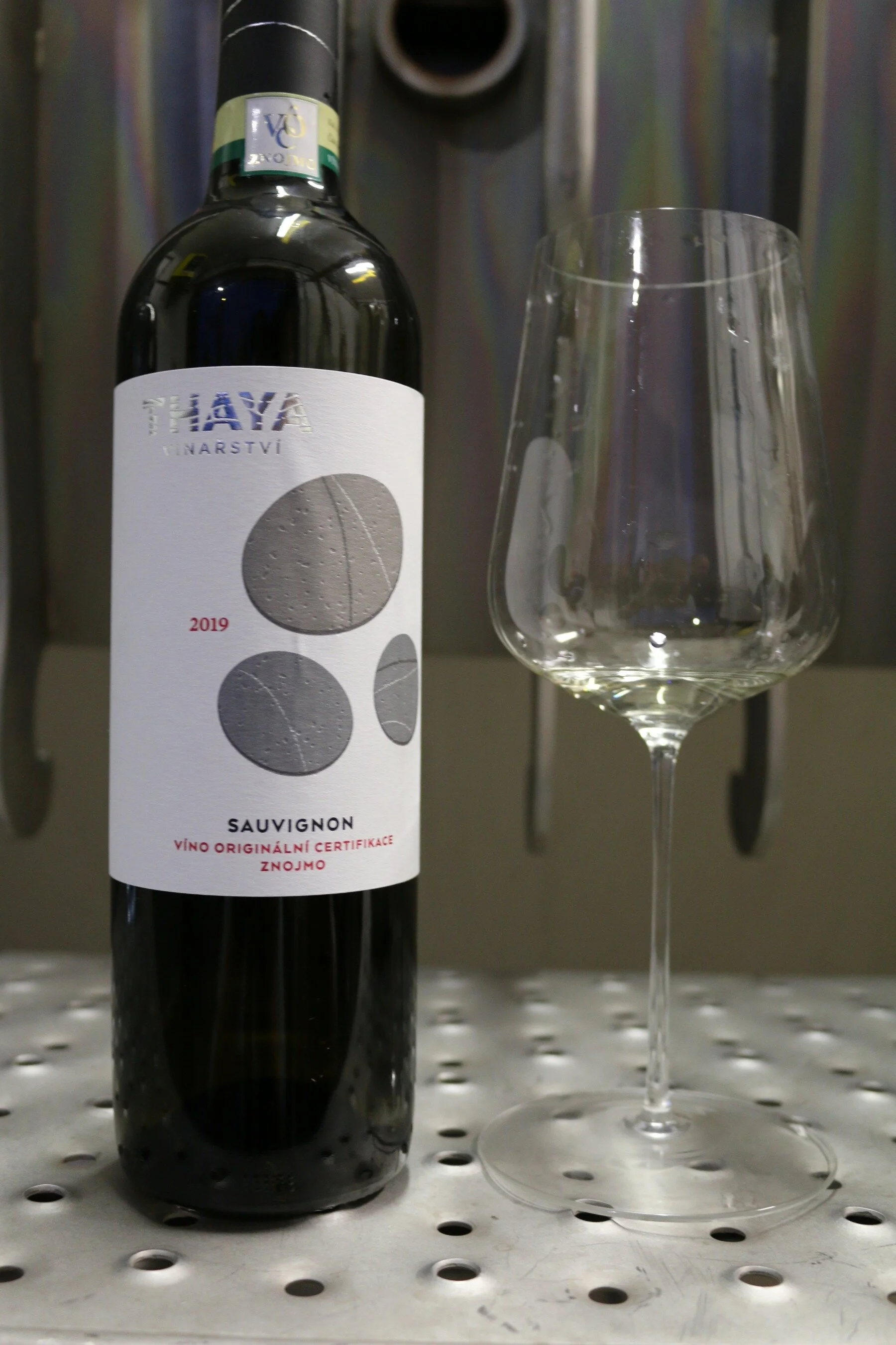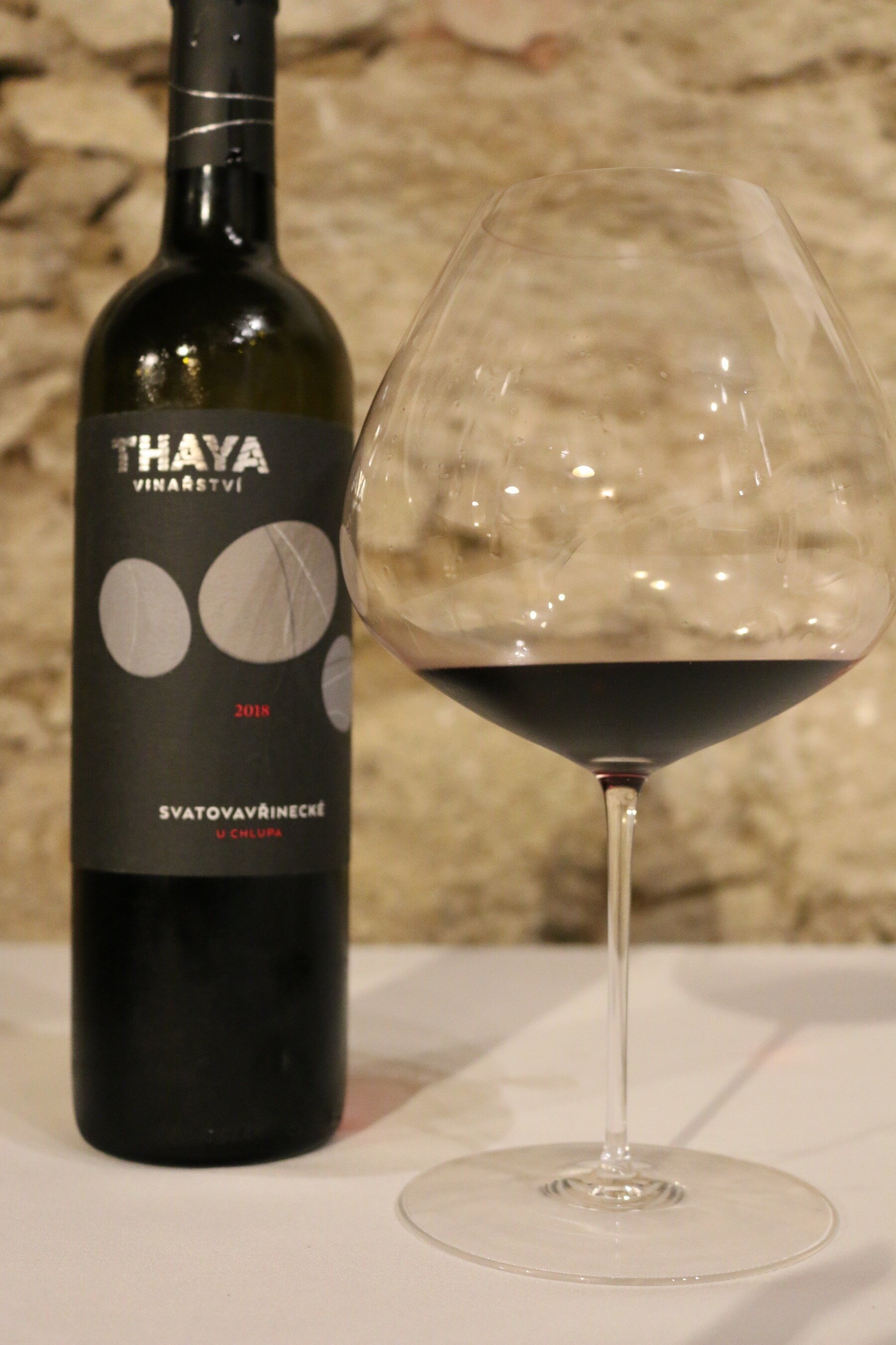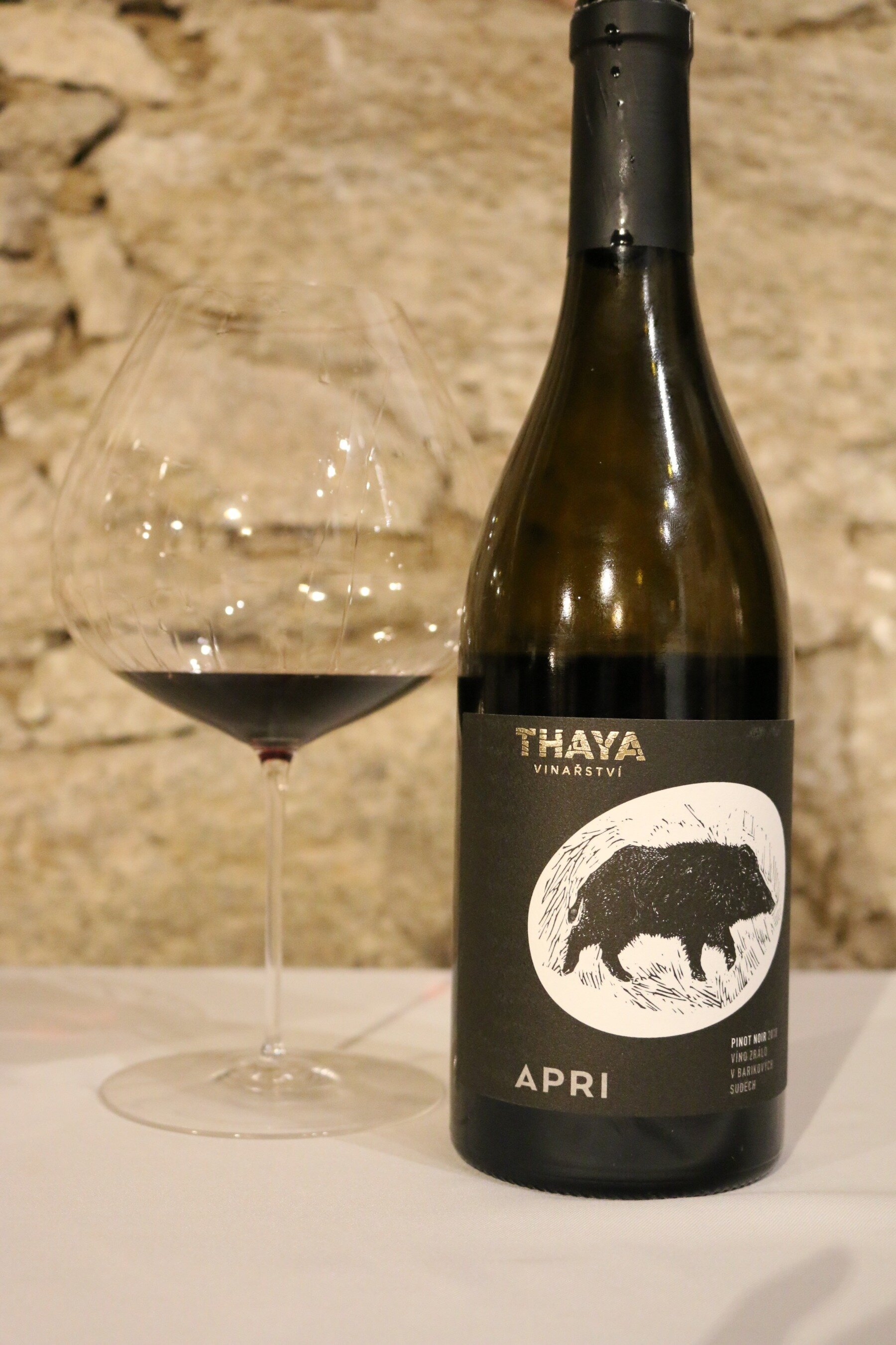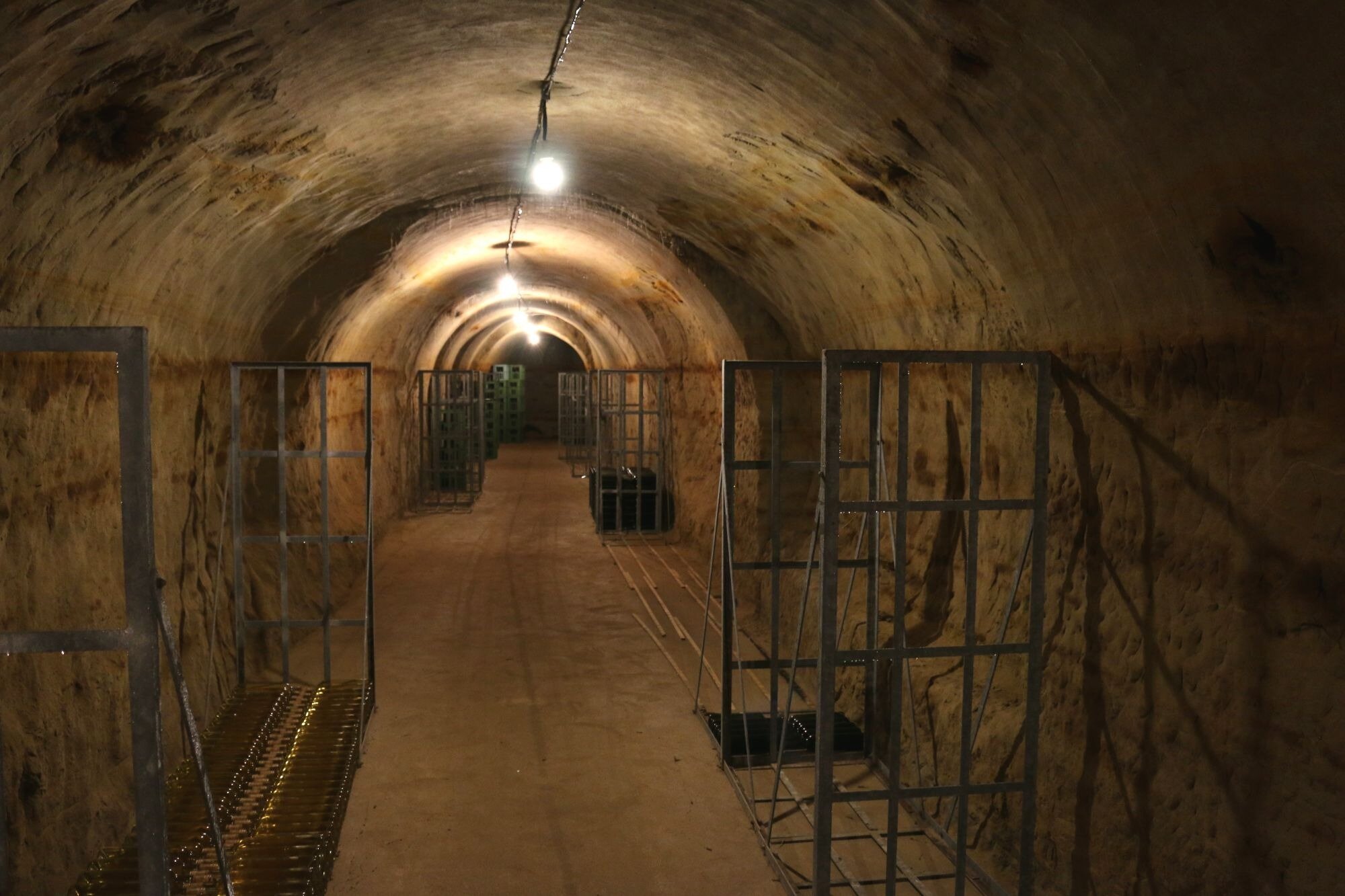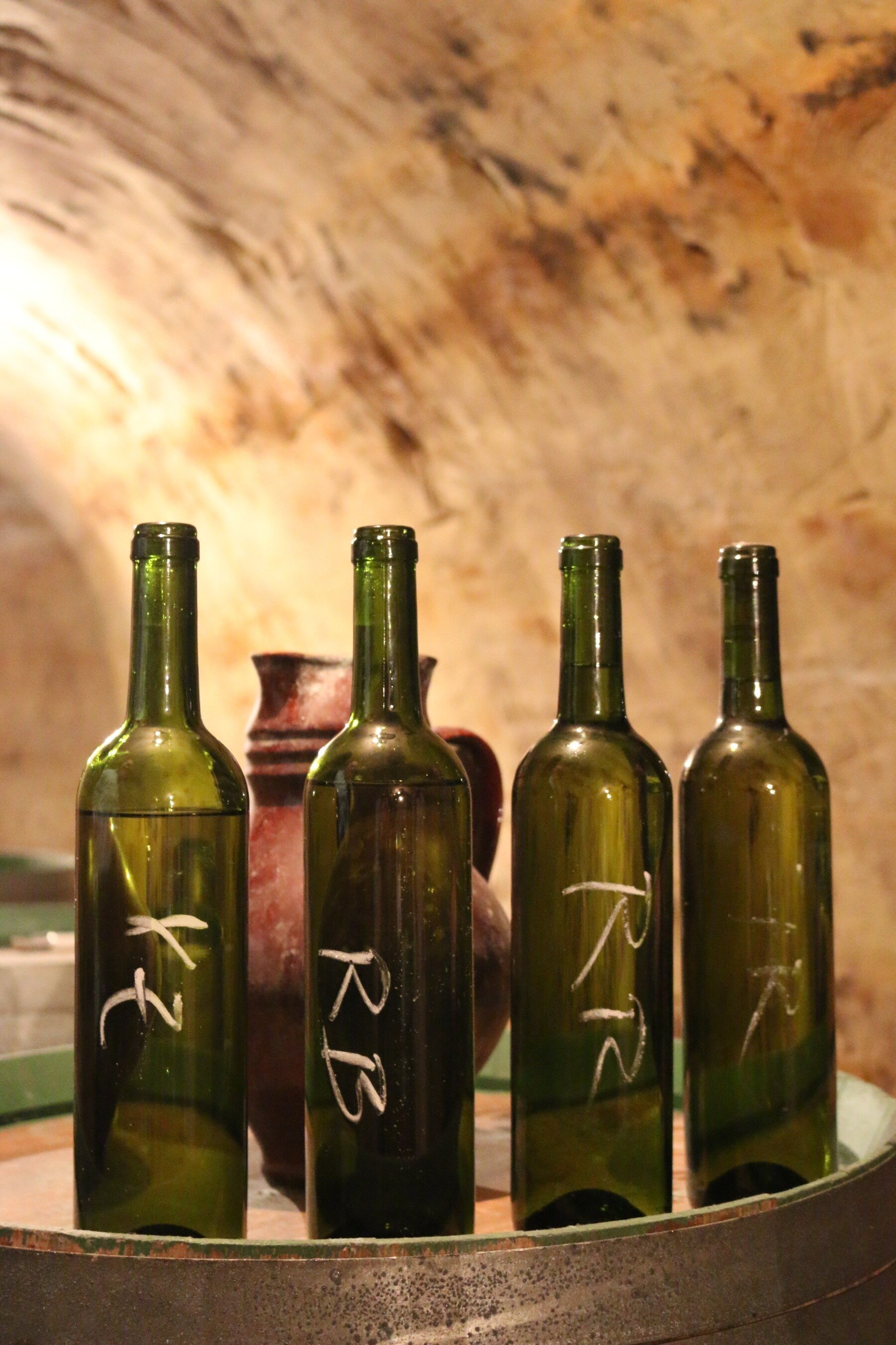VOC Znojmo
Veltlinské Zelené from Lambeck Vineyards
If you never knew that the Czech Republic makes wine, you are not alone. I often remind my wine friends that prior to landing in Brno, I had never tasted a Czech wine, nor had any inkling as to the extent of viticulture in the country. Yet over the course of two years, I have come to understand the magnitude and the importance of the Czech wine industry to the country’s culture and gastronomy, and have felt an obligation to share my experiences and knowledge with the English speaking community. After all, there is nothing better than enjoying a local wine, crafted with passion, innovation, and dedication to continuing the country’s winemaking traditions. So join me in heading to South Moravia, where I had the pleasure of meeting the movers and shakers of the VOC Znojmo.
Photo courtesy of CMB
To briefly summarize, South Moravia is divided into four major subregions : Mikulov, Velké Pavlovice, Slovácko, and Znojmo. These regions were originally divided based on geographical location, topography, climatic conditions and soil compositions. Yet one region in particular has quickly gained my attention, not only for its aesthetic beauty and fantastic wines, but for its spirit of cooperation and unity amongst its winemakers. This region is Znojmo.
The subregion of Znojmo is steeped in wine history, primarily due to its advantageous location along the Dyje River and its border to Austria. Dating back to the 10th century, vineyards have been propagated and wine has been produced, and the city has continued to be an historic, commercial, and cultural center, complete with Roman architecture that remains to this day. Currently, there are over 3,100 hectares of land under vine nestled in over 55 wine growing villages, each with its own specific climatic and geographical advantages.
Znojmo was the first wine region in the country to introduce a VOC, or Vína Originální Certifikace. This certification is similar to the appellation systems known in neighboring regions, like France, Italy, and Spain.
Established in 2009, the Znojmo VOC currently has 20 members who actively participate and collaborate on projects, tastings, and marketing promotions. Additionally, it is the VOC members who approve those wines which will bear the VOC Znojmo label.
Alongside stringent regulations on the production methods, vineyard training, and harvest protocols, the three permitted grape varieties include Veltlinské Zelené (Grüner Veltliner), Ryzlink Rýnský (Riesling), and Sauvignon Blanc. Certainly, other grape varieties can be produced and bottled in Znojmo, yet only those three grape varieties may bear the VOC Znojmo label on the bottle. A list of the accepted qualifications can be found here, and these rules have been established and approved by the member winemakers.
Despite having written about Znojmo before on my blog, I am thrilled to share my most recent experience here, to encourage more English speaking expats in Brno to explore this wildly unique and exciting wine region that is literally just a bus ride away.
Lambeck Vinařství
A few weeks ago, I met Lenka Ludviková through a mutual friend here in Brno. Her family is from the Znojmo region, and after our initial meeting, she kindly reached out to her contacts and invited me to join her for an afternoon in Znojmo in order to learn more about the region. Little did I know what was in store!
Lambeck Cottage in Popice, Znojmo
After scooping me up in Brno, Lenka and I began our afternoon visiting her family’s cellar in Popice, a tiny village centered between Hnanice and Konice. Lenka is no stranger to wine- her family has been producing wine for decades, and both her and her brother are dedicated to continuing with the traditions set forth by their ancestors.
A few years ago, Lenka’s brother, Jirka, along with a few of his friends, Lad’a and Radek, decided to embark on their own project- Lambeck winery, producing wine from their own vineyards close to their cottage. Their aim is to produce quality driven white wines typical of the region, using minimal intervention techniques and time honored traditions.
Lambeck winery takes its name from the 18th century abbott, Gregorio (Řehoř) Lambeck, who was himself a winemaker for the Louka monastery in Znojmo (now home to Znovín Znojmo.) The Lambeck coat of arms is seen prominently displayed on the front label of each bottle, an homage to the historic past of the Znojmo region.
Currently farming just one hectare, Jirka and his co-founders are aiming to purchase and plant two additional hectares of vineyards in the next few years. Although their cottage and wine storage is in Popice, their physical processing facility is actually located in the neighboring village, Nový Šaldorf, in a small cellar nestled in on Ulice Sklepy, or Wine Cellar Street.
Lambeck wines, displaying the coat of arms on the label.
Over lunch at the family cottage, we sampled the 2019 vintages of the Veltlinské Zelené, Riesling, and Sauvignon Blanc, all incredibly complex, exciting wines, and for me, ones that display a tremendous aging potential. Jirka explained that both the Veltlinské Zelené and Sauvignon Blanc wines were crafted from their ‘virgin harvest,’ or the harvest from the first selection of suitable grapes from the young vines. I marveled at this fact, as I found all three wines to be richly complex and interesting, despite having come from extremely young vines.
For me, the Lambeck 2019 Veltlinské Zelené was absolute perfection- A Grüner Veltliner that exhibits the classic, spicy white pepper notes accented by subtle citrus tones. After remarking to Jirka of the wine’s complexity, he explained that they do two separate harvests for their Veltlinské Zelené, the first while the grapes have a sugar content of 17.8° NM, and a subsequent second picking, where the grapes maintain a 23.5° NM sugar content.
By blending these two separate components, the Veltlinské Zelené combines spicy, rich mineral tones with juicy, ripe fruited tones. Additionally, by allowing for a slow, steady sedimentation of both the juice and the must, the wine gains a broader texture and expansive aromatic range. A delightful surprise from a new winery with young vines, one that is obviously focused on quality and attention to detail.
As we finished our lunch, Jirka served his 2018 polosuché (or semi-dry) Riesling, which exploded with notes of juicy apricot, honey, and chamomile. To say I was impressed with these wines would certainly be an understatement.
After sampling the family’s wines and exploring the 18th century cellar, we made a quick jaunt to the vineyards, located just behind the family’s cottage. There, we sampled grapes from the vine, comparing row by row the unique qualities that set each variety apart. Although the vines are young, the family is dedicated to the success of Lambeck winery, and I can only see a huge potential for their future.
Lambeck Vineyards
Photo courtesy of Znovín Znojmo
For our next stop, we headed to one of the most influential wineries in the country- Znovín Znojmo. To put it simply, I was beyond excited to check this place out. For two years, I have sampled Znovín’s wines and have always been impressed at the overall quality and consistency that this large winery can maintain year after year.
Šobes vineyards of Znovín Znojmo- Photo courtesy of Znovín Znojmo
Znovín Znojmo farms over 500 hectares of vines in Znojmo and Velké Pavlovice, and has been a driving factor in maintaining a benchmark of quality and consistency over the years. According to their website, the Znovín Znojmo winery sells approximately 17,000 bottles of wine per day! An incredible statistic considering that this often accounts for a Moravian winery’s total annual production. For me, the Znovín wines are accessible, affordable, and prove that although production levels remain high, the attention to detail is indubitably of primary importance.
Znovín Znojmo’s tasting room and banquet facilities are located in the historic Louka Monastery, and since its establishment, the winery has won countless international awards for their wines, both here and abroad.
Greeting us at the winery was VOC Znojmo Director Mgr. František Koudela and Znovín Znojmo Director Ing. Pavel Vajčner. Although our appointment at Znovin was brief, Mr. Vajčner was eager to show me the winery’s tasting rooms and facility operations. Unlike the small wineries that I am accustomed to visiting, Znovín Znojmo’s tasting room is enormous, with an expansive permanent art exhibition and banquet rooms available for weddings and other private event rentals. The rooms span three floors in the most enviable location in Znojmo, and the banquet halls offer an absolutely unique venue for any celebration.
The Louka Monastery itself was founded in the 11th century, and although the initial intention was to establish a larger building, the final plans were never achieved, and the building remained only one third of its potential size. Towards the beginning of the 18th century, the Premonstratensian monks were the largest vineyard land owners in the Znojmo region, and henceforth built some of the largest wine cellars under the monastery. Unfortunately, the monastery was abandoned in 1784 during the church reforms of Joseph II and the building remained uninhabited until the end of World War II. The individual caged cellars underneath the monastery are now available for rent to the public, for those looking to store Znovín’s wines for long term storage.
After 1945, because of its location near the Austrian border, the Louka Monastery was transformed by the Czech communist party into a military school with barracks, and was mainly used for border control and military training operations. Today, some of these military paintings that adorned the walls remain untouched, leaving behind traces of the monastery’s military past.
As an additional tourist attraction, Znovín Znojmo organizes permanent art exhibitions in the main hall, exclusively featuring Czech artists from in and around the region. Other exhibits include 19th & early 20th century winemaking equipment, terroir exhibits featuring soil samples, and early 20th century advertisements that were used in Znojmo decades before.
Walking through the Louka monastery in Znojmo offers the curious tourist a taste of the past, while enjoying a sip of the future.
While visiting Znovín, it is only natural to sample some of their wines! Mr. Vajcner poured us samples of their Sauvignon Blanc suché, their Modrý Janek polosuché, and their Tramín Červený Sladké, each wine proving to be an absolute delight. The Sauvignon Blanc showed refreshing acidity, bright citrus fruit, and delicate herbal undertones.
The Modrý Janek, a grape that is not often on my radar, showed delicious melon and lemon flavors, with underlying hints of blueberry and blackberry. Modrý Janek translates to Blauer Hans, and was given the name because of its chameleon-like character on the vine. All grapes start their journey a green color, and whereas grapes like Sauvignon Blanc and Riesling maintain their green skin, others subsequently transform into various shades of purple, red, magenta, and blue (like Gewürztraminer.) Yet Modrý Janek changes its color once more, turning from green, to red, and back to green as it finishes ripening, an unlikely plot twist in the life of a wildly unknown grape.
To end our tasting, we indulged in Znovín’s Tramín Červený sladké, a wine that revealed spiced honey tones, orange peel, and slight tertiary tones of petrol. Znovín Znojmo offers tourists and wine lovers alike a chance to step back in time, providing an opportunity to learn about the origins of Znojmo’s wine history while appreciating their dedication to winemaking for the future.
Our next appointment brought us to Nový Šaldorf, a tiny village and independent municipality adjacent to Znojmo. Nestled in the village is Ulice Sklepy, or wine cellar street, where dozens of cellars line the road, and wine lovers can enjoy a relaxed atmosphere while exploring and sipping wine.
Kamil Piálek and Jaroslav Jäger; photo courtesy of VOC Znojmo
Our first stop was Piálek & Jäger’s cellar, where we met with co-founder and winemaker Kamil Piálek. Kamil explained that both he and his partner Jaroslav Jäger studied at Prague, University of Agriculture, and returned to Nový Šaldorf with intentions to produce wine using traditional methods passed down through the generations. They established their vineyards in a bio/organic method in 2004, and had their official first vintage in 2010. You can read an interview with them from the Czech magazine Wine and Degustation here.
Currently, their production sits at 60,000 bottles a year, and their dominant focus is on mineral driven white wines on various quality levels. In addition to enjoying a wine tasting, Piálek and Jäger recently renovated their cellars to include a modern, sleek dining area and full kitchen, where they prepare specially designed gastronomy tasting menus curated to match each wine. The dining area can be rented out for private events, and the tables, designed with function in mind, can be moved and positioned to accommodate up to 40 guests.
I was first introduced to their VOC Riesling 2018 at the National Wine Salon, where it was awarded a Gold Medal, and was curious to learn more about their production. We started our tasting by sampling their 2019 Veltlinské Zelené VOC, which was peppery and mineral driven, with a zippy, refreshing acidity on the finish. Kamil then poured the second sample, their Veltliner Extra 2019, explaining that 40% of the wine spends 6 months in 600 liter acacia barrels. The wine retained its Grüner Veltliner backbone, but was complemented with floral tones, baked apple, and exuded a creamier, rounded finish.
Although we were pressed for time, (wine waits for no one!) Kamil poured me their 2016 Chardonnay Sur-Lie, which sees 9 months of battonage in stainless steel. The wine showed characteristic notes of lemon, yellow apple, and creamy vanilla tones, yet was unhindered by any oak influence exhibiting a rounded, plump, luscious texture.
We continued on with a sample of their Riesling Sexenberg 2018, a perfect example of Znojmo Riesling, showing juicy notes of nectarine and green apple, with mouthwatering acidity and hints of petrol tones on the palate. To finish our tasting, Kamil poured a sample of their Grand Reserve Chardonnay 2016, which spends 24 months in a 500 Liter new oak barrel. This wine was singing- revealing salty lemon, nutty, spiced tones, accented by succinct acidity on a lingering finish. It was truly Burgundy in a glass, and I had to remind myself that I was, in fact, still in Nový Šaldorf.
René Vratil- Winemaker at Arte Vini; Photo Courtesy of VOC Znojmo
Just down the road from Piálek and Jäger is Arte Vini, run by young winemaker, René Vratil. I had tried Rene’s wines in Brno before, and was glad to finally learn a bit more about his production and methods. René explained that although he does not own vineyards, for ten years, he has worked in cooperation with local growers both in Velké Pavlovice and Znojmo. These growers work using exclusively organic methods and have continued to be a reliable source of grapes for Arte Vini, where Rene crafts clean, modern wines using traditional and natural production methods. René is originally from Stuttgart, Germany, but moved to Znojmo after meeting his wife who is a native of the region. He realized the similarities of terroir between Germany and Znojmo, and since his first vintage in 2011, he has worked tirelessly to produce wines that reflect the local traditions and Znojmo’s unique, cool climate growing environment.
Designed in Austria, Arte Vini’s labels are easily recognizable, with large block letters denoting either the wine style, the VOC, or the initials of the grape variety. Arte Vini was also one of the founding members of the Šaldorfé Sklepy Association, and since 2013, has been a member of the VOC Znojmo.
We first sampled his flagship wine, the Green, which is a refreshing, light Gruner Veltliner produced in stainless steel. It showed fresh, juicy notes of grapefruit, apple, and lemon, with slight saline tones on the finish.
We then tried his VOC Rosé 2019, a blend of Saint Laurent and Frankovka, which exhibited a pale cherry color, highlighted by creamy notes of strawberries, cherries, and red apple with a salty, mineral finish.
For me, Arte Vini’s wines are clean, inspired, and modern, offering accessible wines that demonstrate the future direction of South Moravia’s wine industry.
Thaya Vineyards- photo courtesy of Thaya Vinařství
Jumping in the car, we drove on to Vinařství Thaya in Hnanice, which was formerly known as Vinařství Travniček and Kořinek. The winery was founded over twenty years ago, but was rebranded just this past summer. The word Thaya refers to the Dyje River (Thaya being the German translation of the river), a dedication to the surrounding vineyard environment. Vinařství Thaya, also a member of the VOC Znojmo, produces approximately 100,000 bottles a year, and farms over 100 hectares implementing integrated production and sustainable methods.
Jakub Smrčka - Winemaker at Vinařství Thaya ; photo courtesy of Vinařství Thaya
When I inquired as to these statistics, young winemaker Jakub Smrčka remarked that while the winery processes approximately 150 tons of fruit per year, they end up selling 250 tons of fruit per year, mainly to Znovín Znojmo and other local VOC producers.
The winery is currently building a new processing facility in the neighboring village, Havraníky, in order to increase not only the size of production, but enhanced attractions for tourists looking to explore the area. Thaya winery produces various lines of wine, including their entry level, where the wines mature in stainless steel, their VOC level, which incorporates the use of stainless steel and neutral maturation vessels, and their premium brands, which undergo maturation in François Frères French barriques.
We began our tasting in their press room with Thaya’s traditional method sparkling Blanc de Blancs, produced and bottled in their winery facility. The sparkling undergoes 30% oak maturation in François Frères French barriques, while the remainder matures in stainless steel. This was a ‘special treat’ wine, as it has not even hit the market yet, and is still undergoing secondary maturation in bottle.
We then continued on with Thaya’s Veltlinské Zelené from their basic line, which showed the classic notes of lime, white pepper, and clean minerality on the finish. Our third sample was Thaya’s Premium Sauvignon Blanc VOC, which for me, was the showstopper. I have always been a massive fan of the white wines from the Loire Valley, and this wine was certainly reminiscent of a Pouilly Fumé, exhibiting stony minerality, lemon zest, and a weighty mid palate.
Dusk in Havraníky
As day turned to night, we headed to Thaya’s tasting room, where we indulged in their fabulous Saint Laurent premium, showing brooding black and red berry fruit, fine grained tannins, and light spiced tones from maturation in François Frères.
We ended our tasting at Thaya by sampling their Pinot Noir Apri 2018, a gorgeous example of finely matured Pinot Noir. The wine spent close to two years in François Frères French barrique, allowing the wine to gain complexity, a firm tannin structure, integrated acidity, and a perfumed bouquet of black cherry, sweet spice, black plums, and mocha.
Víno Vaněk
For our final appointment, we headed over to Víno Vaněk, located in the neighboring village of Vrbovec. In 1995, Jan Vaněk established the winery with his father, and has since expanded to farming over 4.5 hectares of land, located in the U sv. Urbana and Dívčí hora vineyard sites. A member of the VOC Znojmo, Jan Vaněk believes in sustainable farming, and produces wines that are reflective of the terroir and his family’s traditions of winemaking.
Jan’s cellars, much like the others found in Znojmo, are located between 10-15 meters underground, and are formed from ancient layers of flintstone and sandstone. Originally carved out by the Germans who inhabited the area centuries ago, the cellars are some of the oldest in the country, and because of their temperature stability, maintain the ideal environment for long term cellaring. Jan was just finishing up his processing of grapes for the day, and kindly invited us deep into his cellar to enjoy four samples.
First, we tried his Rulandské Bilé, or Pinot Blanc, 2019, a wine that was plump and juicy, exhibiting ripe stone fruit, summer melon, and a slight nutty, creamy finish. Next, we enjoyed a sample of his Veltlinské Zelené (Grüner Veltliner), which for me, was textbook Znojmo Grüner, with aromas of white pepper, lime, apple, and citrus.
The third, and for me, the standout, was Vaněk’s Riesling 2019, exhibiting concentrated, weighty notes of linden blossom, zesty green apple, and lemon balm. Jan explained that one third of the grapes come from his oldest vines, dating back to 1964, while the remaining grapes come from his newer vines. We finished our tasting with Jan’s Tramín Červený polosuché, a wine that was perfumed and fragrant, offering notes of exotic fruits, spice, and candied lemon. Although I had never tried Víno Vaněk’s wines before, I am certainly his newest fan, and look forward to my next visit back to his cellar.
I often stop and wonder how lucky I am. Having spent two years in Brno, with two more years to go, I have the awesome opportunity to meet the movers and shakers in the South Moravian wine industry. As a foreigner, I am humbled by the generosity and enthusiasm of those here in the region who take time out of their day to meet and speak with me, especially during harvest, the busiest time of the year. I truly appreciate their encouragement, and I hope to continue sharing my wine experiences with other English speakers in the community.
Special thanks to Lenka Ludvíková and František Koudela for planning such an excellent day of wine tasting!
My wine life here has become a dream come true. In the words of Christopher Reeve, “So many of our dreams at first seem impossible, then they seem improbable, and then, when we summon the will, they soon become inevitable.”






